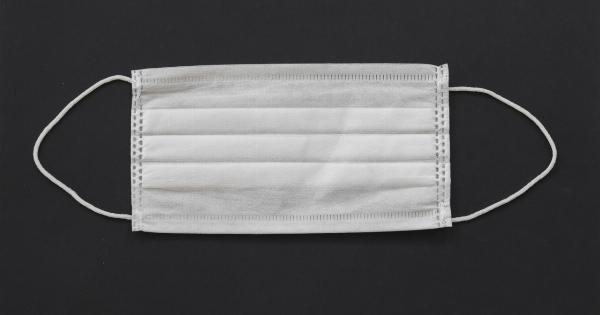Pneumonia is a common respiratory infection that affects people of all ages. However, it is particularly concerning when it occurs in children, as it can have serious effects on their health and well-being.
In this article, we will delve into the topic of childhood pneumonia, discussing its causes, symptoms, treatment, and long-term effects.
What is Pneumonia?
Pneumonia is an infection that inflames the air sacs in one or both lungs. It can be caused by various microorganisms, including bacteria, viruses, and fungi.
When the air sacs become filled with fluid or pus, it becomes difficult for the lungs to function properly, resulting in symptoms such as cough, fever, and difficulty breathing.
Childhood Pneumonia
Childhood pneumonia refers to pneumonia that affects children aged 0 to 5 years.
According to the World Health Organization, pneumonia is the leading cause of death in children worldwide, accounting for approximately 15% of all deaths in children under the age of 5. This statistic highlights the importance of understanding and addressing childhood pneumonia.
Causes of Childhood Pneumonia
The causes of childhood pneumonia can vary, and they often depend on the age of the child and the overall health of their immune system. The most common causes of childhood pneumonia include:.
- Bacterial Infections: Bacteria such as Streptococcus pneumoniae and Haemophilus influenzae are common culprits of bacterial pneumonia in children.
- Viral Infections: Viruses, including respiratory syncytial virus (RSV) and influenza, can cause viral pneumonia in children.
- Fungal Infections: Fungal pneumonia is relatively rare in children but can occur in children with weakened immune systems.
Symptoms of Childhood Pneumonia
Recognizing the symptoms of childhood pneumonia is crucial for early diagnosis and treatment. Some common symptoms of childhood pneumonia include:.
- Cough: A persistent cough that may be accompanied by phlegm or mucus.
- Fever: A high body temperature, often above 38°C (100.4°F).
- Rapid Breathing: Increased respiratory rate, with shallow or rapid breaths.
- Chest Pain: Pain or discomfort in the chest, especially when breathing deeply or coughing.
- Wheezing: A whistling or rattling sound while breathing, caused by narrowed airways.
- Fatigue: Tiredness and lack of energy.
- Loss of Appetite: Reduced interest in eating or drinking.
- Nasal Flaring: Widening of the nostrils during breathing, indicating increased effort to breathe.
Treating Childhood Pneumonia
Early diagnosis and appropriate treatment are essential in managing childhood pneumonia. The treatment approach will depend on the cause and severity of the infection. In most cases, treatment involves:.
- Antibiotics: If the pneumonia is bacterial, the child will be prescribed antibiotics to fight the infection.
- Antiviral Medications: If the pneumonia is viral, antiviral medications may be recommended to alleviate symptoms and aid recovery.
- Fluids: Keeping the child hydrated is important, especially if they have a high fever or are experiencing difficulty drinking or eating.
- Fever Reducers: Over-the-counter fever-reducing medications, such as acetaminophen or ibuprofen, can be used to manage fever and discomfort.
- Cough Suppressants and Expectorants: Depending on the severity of the cough, a healthcare professional may recommend suitable cough medicines to alleviate symptoms.
Complications and Long-term Effects
While most cases of childhood pneumonia can be successfully treated, there can be complications and long-term effects associated with the infection. Some potential complications include:.
- Pleural Effusion: The build-up of fluid between the layers of tissue lining the lungs and chest cavity.
- Lung Abscess: A pus-filled cavity within the lung.
- Empyema: The accumulation of infected fluid in the chest cavity.
- Bacteremia: The presence of bacteria in the bloodstream.
- Respiratory Failure: Severe cases of pneumonia can lead to respiratory failure, which can be life-threatening.
Furthermore, recurrent episodes of childhood pneumonia can contribute to long-term respiratory issues, such as:.
- Asthma: Children who have experienced pneumonia may be more susceptible to developing asthma later in life.
- Chronic Lung Disease: Pneumonia can cause scarring and damage to the lungs, leading to chronic lung disease.
- Impaired Lung Function: Reduced lung function, including decreased lung capacity and impaired oxygen exchange.
Preventing Childhood Pneumonia
Preventing childhood pneumonia is crucial in reducing the burden of this infection. Some preventive measures include:.
- Immunization: Ensuring that children receive the recommended vaccinations, such as those for Streptococcus pneumoniae and Haemophilus influenzae.
- Hand Hygiene: Teaching children proper handwashing techniques and promoting good hygiene practices.
- Breastfeeding: Encouraging and supporting breastfeeding, as breast milk contains essential antibodies and helps boost the child’s immune system.
- Avoiding Exposure: Limiting exposure to individuals with respiratory infections and crowded places when possible.
- Reducing Indoor Air Pollution: Ensuring a clean and smoke-free environment indoors.
Conclusion
Childhood pneumonia is a significant health issue, accounting for a considerable number of childhood deaths worldwide.
Understanding the causes, symptoms, treatment, and potential long-term effects of pneumonia is vital for early diagnosis, appropriate management, and prevention. By prioritizing preventive measures and timely treatment, we can reduce the impact of childhood pneumonia and ensure the optimal health and well-being of children.






























